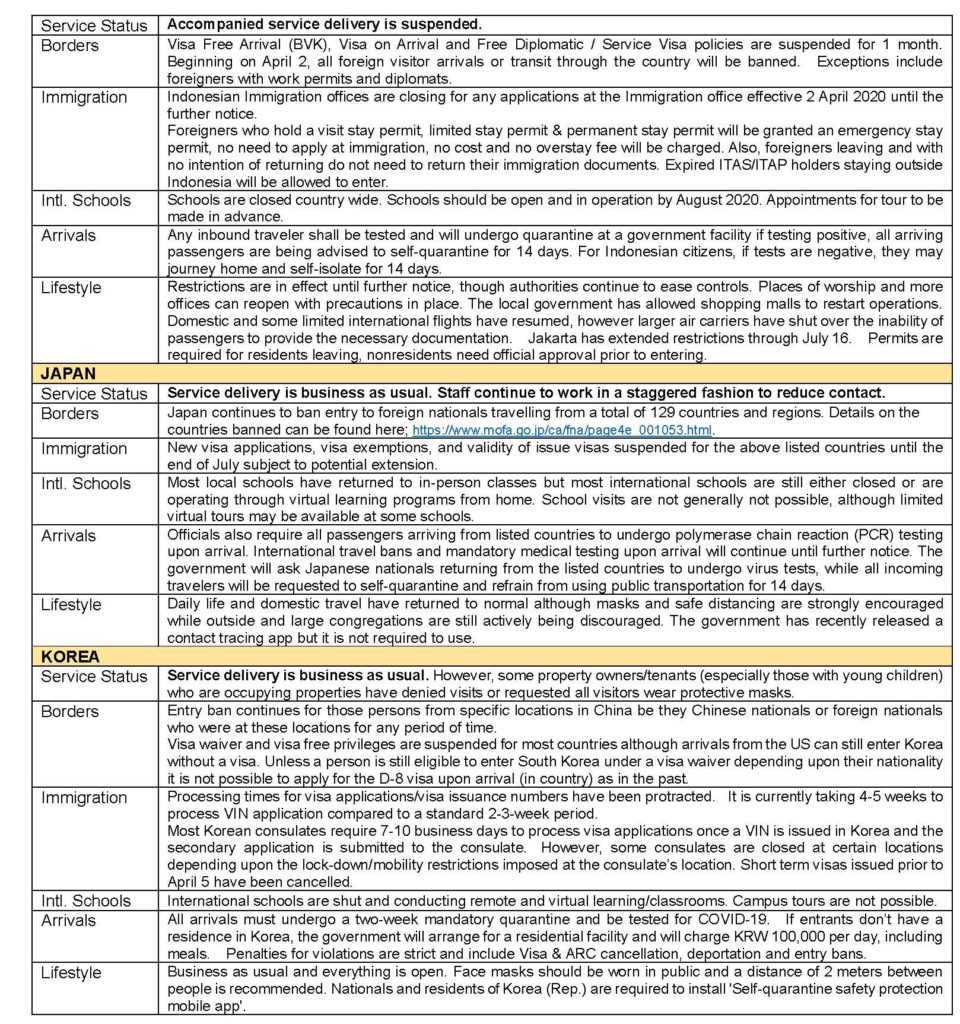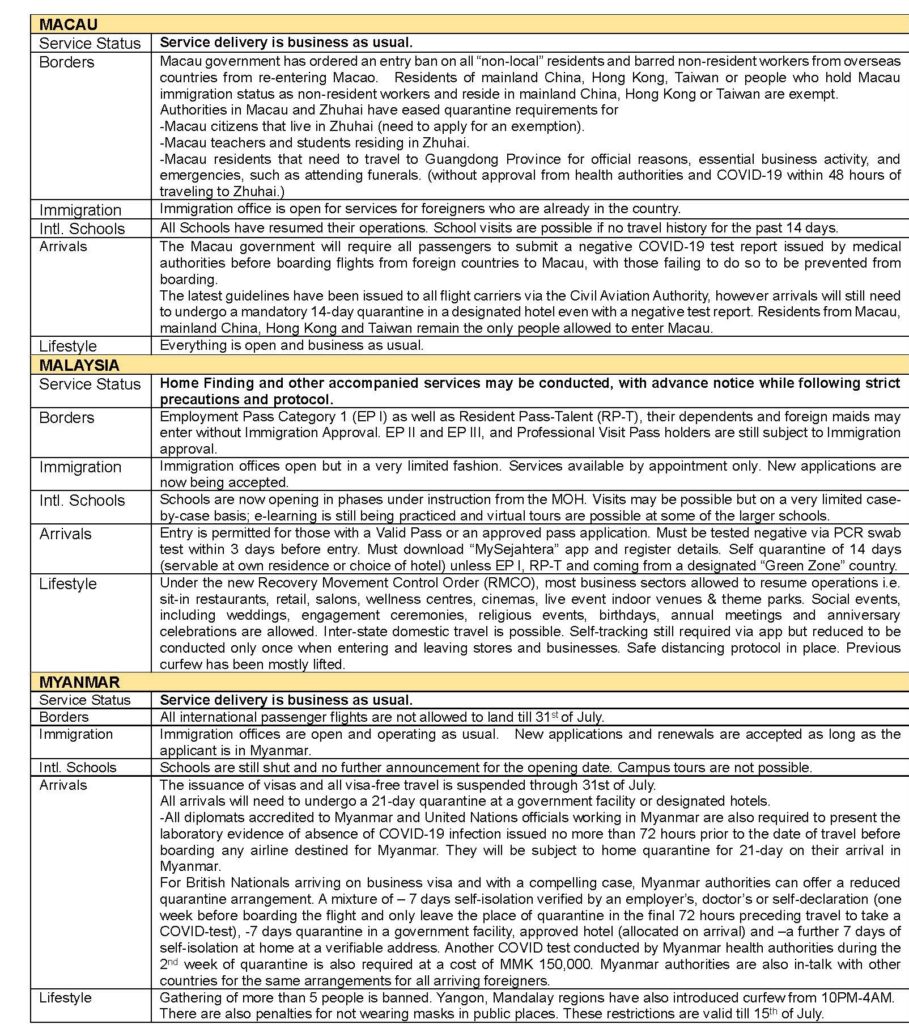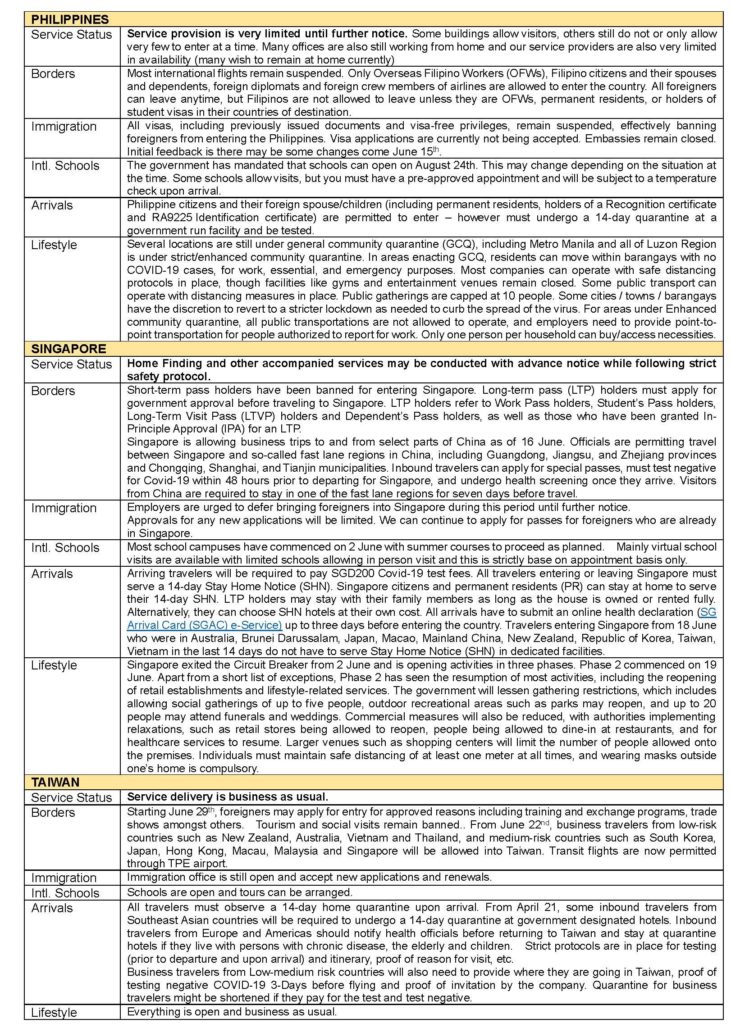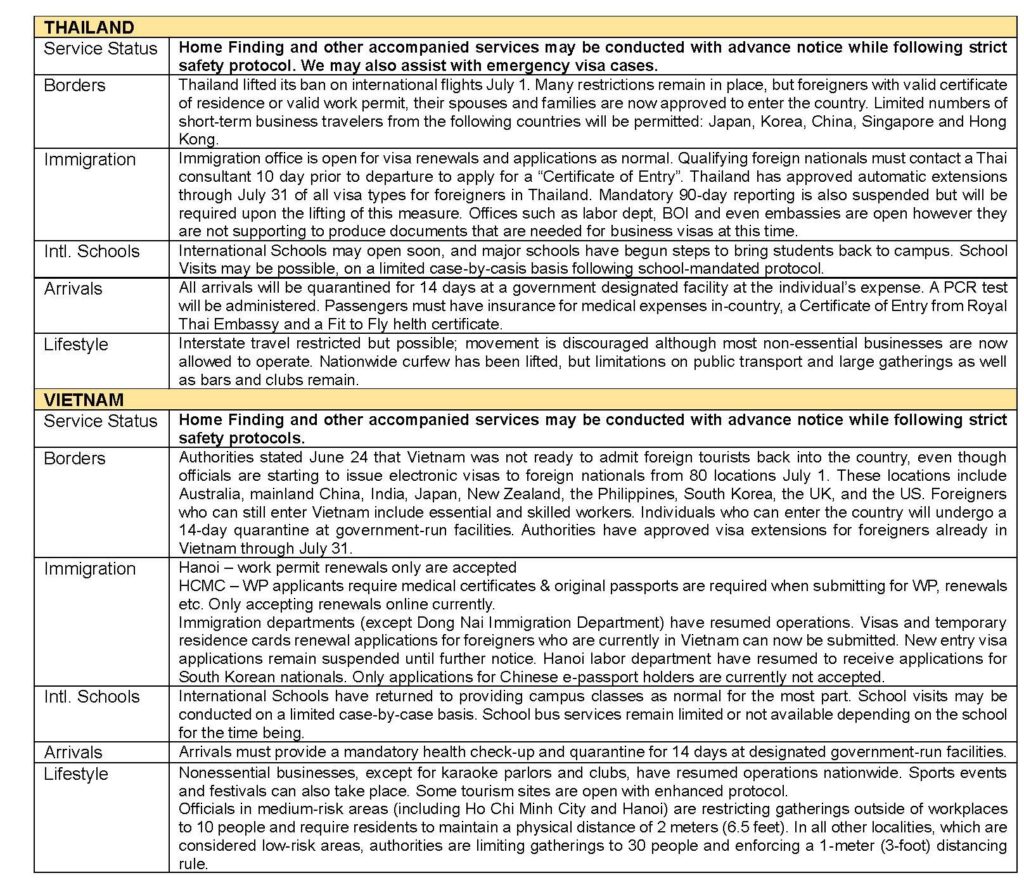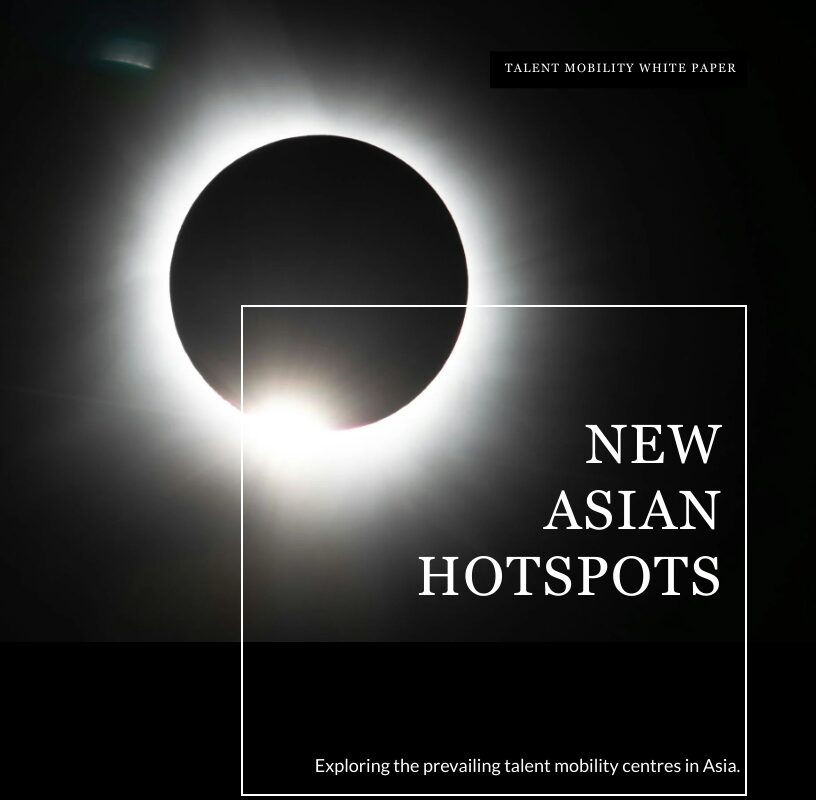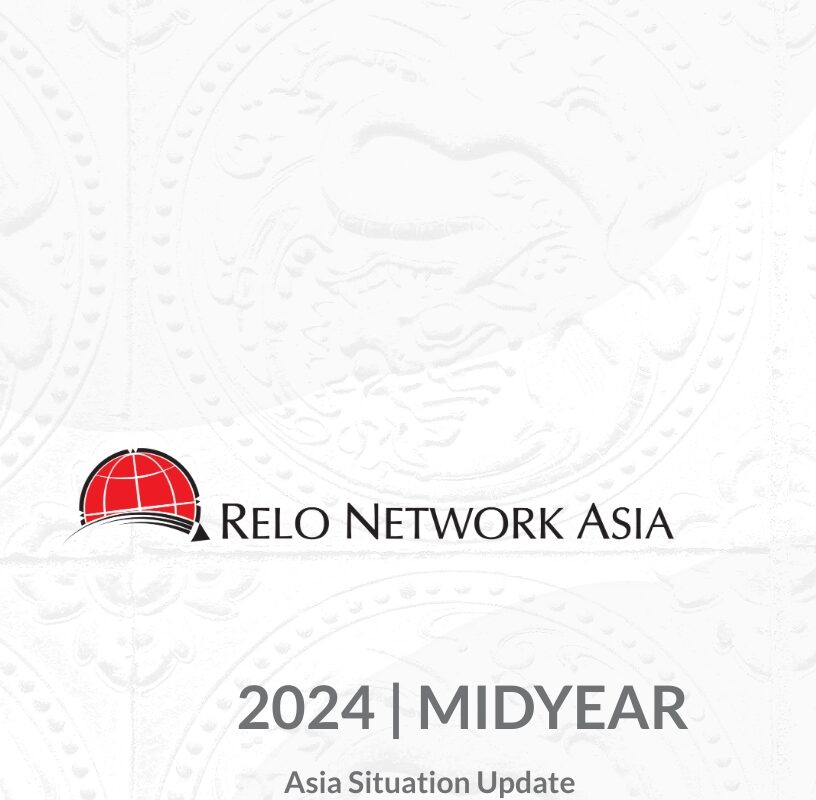I took a look back at our piece “What will the return to normal look like?” published only in April of this year, at an equal distance between our initial outbreak in China and the global pandemic of today.
We exist with similar realities: Covid-19 continues to spread, there remains no treatment and we have no vaccine against it. Countries around the world have joined the battle to restrict the spread of the virus through various confinement and distancing programs, testing and contact tracing.
We continue to see confinement through stay at home notices and closure of all but essential businesses that once impacted entire countries, now being applied more locally or regionally based upon infection rates. Melbourne, Australia recently issued a new Stay-at-Home requirement and Beijing is in the process of lifting one put in place late last month. But in many of our locations, service delivery and life is less restricted and operating almost under the new normal which includes taking precautions.
Barriers to movement across borders remain quite stringent, although some countries including China, Korea, Hong Kong, Macau, Singapore, Taiwan, Thailand and Vietnam have opened slightly under strict parameters and controls. Domestic travel restrictions continue to develop as well to protect the interior spread of the virus. Many countries in Asia have implemented contact tracing and health monitoring mobile apps that aid in the identification an notification of exposed and infected persons and in some cases permit access to transportation, stores or other resources.
Where borders crossings are permitted, we see the greatest daily changes to the arrival process. The world has unfortunately not yet created a standard set of requirements and we experience challenges with rapidly changing procedures including all or any pre-departure health disclosures and testing, arrival testing and quarantine. We have just published the second installment in a series exploring the impacts to the assignee experience which focuses on the quarantine period.
You may also click this week’s report below to open in a new window.


